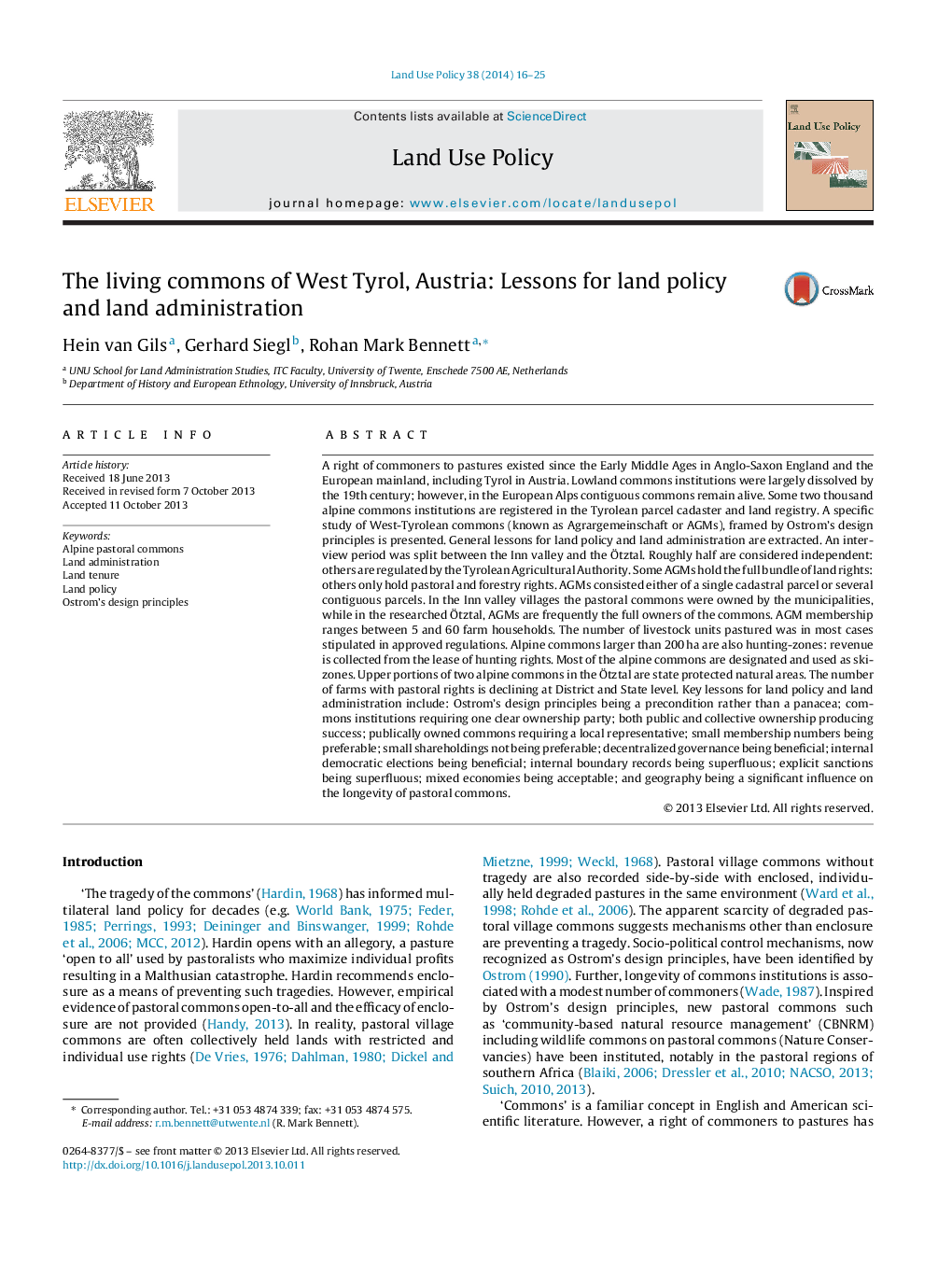| کد مقاله | کد نشریه | سال انتشار | مقاله انگلیسی | نسخه تمام متن |
|---|---|---|---|---|
| 6548702 | 160110 | 2014 | 10 صفحه PDF | دانلود رایگان |
عنوان انگلیسی مقاله ISI
The living commons of West Tyrol, Austria: Lessons for land policy and land administration
ترجمه فارسی عنوان
مشترکین زندگی در غرب تیرول، اتریش: درس های سیاست های زمین و اداره زمین
دانلود مقاله + سفارش ترجمه
دانلود مقاله ISI انگلیسی
رایگان برای ایرانیان
کلمات کلیدی
آلپ صومعه سراسری، اداره زمین، مالکیت زمین، سیاست زمین اصول طراحی استروم،
موضوعات مرتبط
علوم زیستی و بیوفناوری
علوم کشاورزی و بیولوژیک
جنگلداری
چکیده انگلیسی
A right of commoners to pastures existed since the Early Middle Ages in Anglo-Saxon England and the European mainland, including Tyrol in Austria. Lowland commons institutions were largely dissolved by the 19th century; however, in the European Alps contiguous commons remain alive. Some two thousand alpine commons institutions are registered in the Tyrolean parcel cadaster and land registry. A specific study of West-Tyrolean commons (known as Agrargemeinschaft or AGMs), framed by Ostrom's design principles is presented. General lessons for land policy and land administration are extracted. An interview period was split between the Inn valley and the Ãtztal. Roughly half are considered independent: others are regulated by the Tyrolean Agricultural Authority. Some AGMs hold the full bundle of land rights: others only hold pastoral and forestry rights. AGMs consisted either of a single cadastral parcel or several contiguous parcels. In the Inn valley villages the pastoral commons were owned by the municipalities, while in the researched Ãtztal, AGMs are frequently the full owners of the commons. AGM membership ranges between 5 and 60 farm households. The number of livestock units pastured was in most cases stipulated in approved regulations. Alpine commons larger than 200Â ha are also hunting-zones: revenue is collected from the lease of hunting rights. Most of the alpine commons are designated and used as ski-zones. Upper portions of two alpine commons in the Ãtztal are state protected natural areas. The number of farms with pastoral rights is declining at District and State level. Key lessons for land policy and land administration include: Ostrom's design principles being a precondition rather than a panacea; commons institutions requiring one clear ownership party; both public and collective ownership producing success; publically owned commons requiring a local representative; small membership numbers being preferable; small shareholdings not being preferable; decentralized governance being beneficial; internal democratic elections being beneficial; internal boundary records being superfluous; explicit sanctions being superfluous; mixed economies being acceptable; and geography being a significant influence on the longevity of pastoral commons.
ناشر
Database: Elsevier - ScienceDirect (ساینس دایرکت)
Journal: Land Use Policy - Volume 38, May 2014, Pages 16-25
Journal: Land Use Policy - Volume 38, May 2014, Pages 16-25
نویسندگان
Hein van Gils, Gerhard Siegl, Rohan Mark Bennett,
